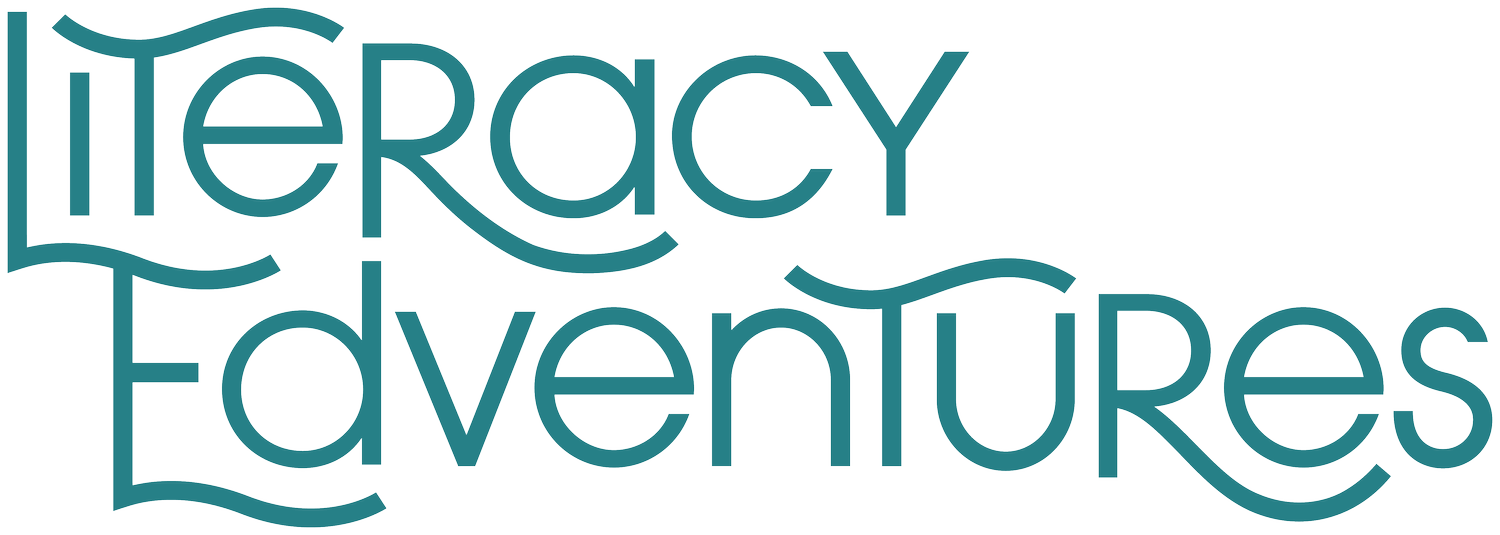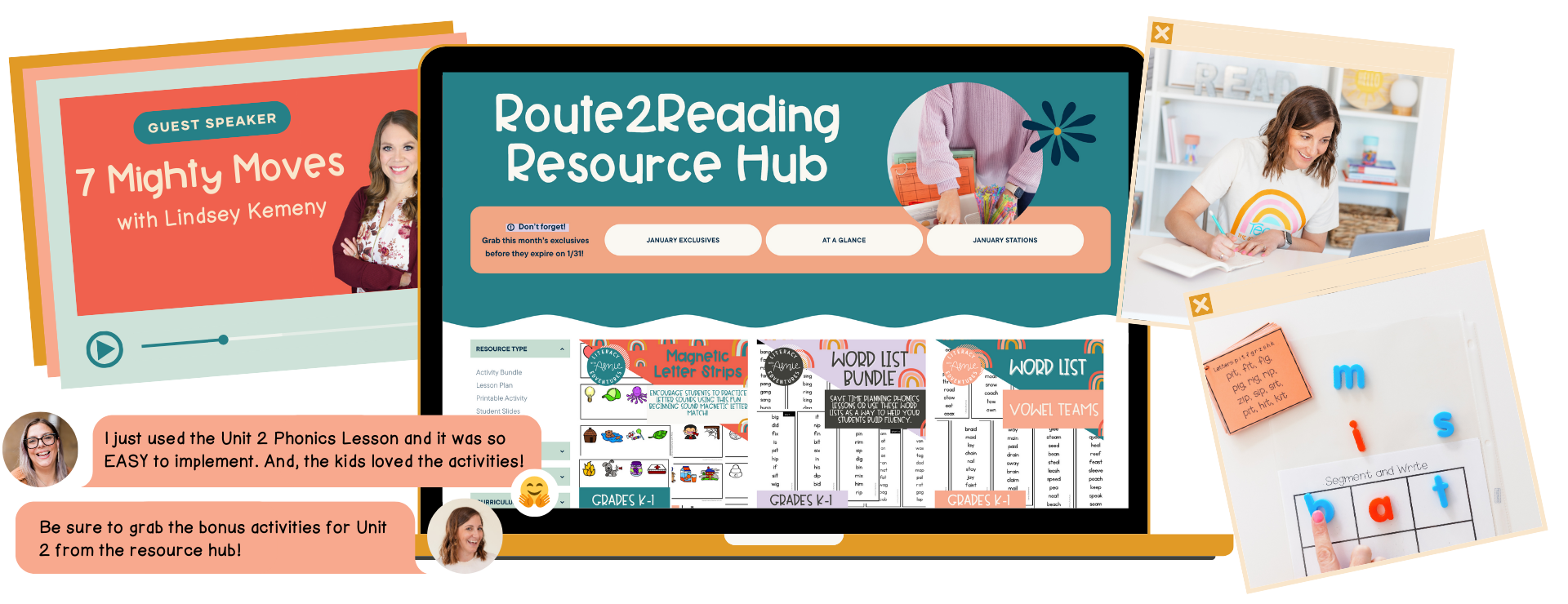Mastering Small Group Phonics Lessons: A Teacher’s Guide to Planning and Instruction
Introduction
Small group instruction is hands-down one of my favorite things to talk about. It’s where the magic happens! It’s where students receive the targeted, intentional instruction they need to progress as readers. Whether you’re teaching foundational skills in kindergarten, reinforcing decoding in first grade, or building fluency in second grade, small groups are the bridge between instruction and mastery.
If you’ve been struggling with small groups, feeling like you’re spinning your wheels, or simply wondering if there’s a better way to plan and teach them, this blog post is for you!
The Foundation of Small Group Instruction
Let’s start by grounding ourselves in why small groups are essential. They allow us to:
Differentiate instruction: You can meet each group of students exactly where they are in their learning journey.
Provide explicit teaching: Small groups allow for the focused, systematic instruction that early readers need to succeed.
Engage students meaningfully: Small groups create a more intimate setting where every student is seen, heard, and actively participating.
Small group instruction is particularly impactful when it’s systematic, consistent, and anchored in a clear framework.
Three Key Components of an Effective Small Group Lesson
A small group lesson should have three essential parts:
Warm-Up & Cumulative Review Build automaticity by revisiting previously taught skills and preparing students for new learning.
Explicit Teaching of a New Skill Introduce new concepts clearly and systematically, providing scaffolding as students practice.
Application in Context Allow students to apply what they’ve learned by reading words, sentences, and passages, and by practicing writing through dictation.
Let’s dive a little deeper into these components.
1. Warm-Up & Cumulative Review
This part primes students for learning and ensures skills are mastered over time through consistent practice.
The Importance of Cumulative Review
Cumulative review ensures that students retain previously taught skills and build upon them. Reading skills are not mastered in isolation—they require repeated exposure and practice over time. Without consistent review, students are more likely to forget earlier lessons and struggle to integrate new concepts.
Cumulative review is essential because:
Reinforces Long-Term Memory: Skills practiced repeatedly are more likely to be stored in long-term memory, making retrieval easier during reading and writing.
Builds Automaticity: The faster students can recognize and apply previously taught skills, the more mental energy they have for higher-level comprehension tasks.
Supports Struggling Learners: Students who need more practice benefit from the structured repetition of cumulative review.
What to Include:
Phonemic Awareness Activities Focus on blending, segmenting, and sound isolation.
Blending: Provide oral segmented words (e.g., /b/-/a/-/t/) for students to blend aloud.
Segmenting: Give students a whole word (e.g., "mat") and have them break it into its individual sounds (/m/-/a/-/t/).
Sound Isolation: Ask students to identify the first, middle, or last sound in a word (e.g., "What’s the first sound in 'dog'? /d/").
Visual Drills Flash a card with a grapheme (e.g., “b”) and have students say the corresponding sound. Including all previous graphemes will allow students ample opportunity to solidify those skills. Visual drills are quick and easy to implement!
Auditory Drills Say a sound (e.g., /b/) and have students write the grapheme(s) that represent it. Auditory drills are a great way to bridge phonemes to graphemes and help make that connection concrete. Each day, choose a handful of previously taught sounds to incorporate into this lesson portion.
Blending Drills Use a blending board to connect graphemes to phonemes (e.g., “b-a-t, bat”). These drills focus on automaticity in reading single words. Blending drills are beneficial because they, too, help students connect the grapheme to the phoneme by segmenting each sound and then blending those sounds to read a word.
2. Explicit Teaching of a New Skill
Explicit teaching means leaving nothing to chance. You directly tell students what they’re learning, why it’s important, and how to use it. When we explicitly teach a new skill, we should follow a gradual release model. The gradual release of responsibility framework strategically transitions the learning process from teacher-led to student-driven. This approach begins with the teacher modeling the skill, progresses to guided instruction, and then allows students to collaborate before they ultimately practice on their own.
How to Structure Explicit Teaching:
I Do: The teacher demonstrates and explains the new skill. Be specific and clear, using precise language and modeling.
We Do: Students practice with the teacher’s guidance, receiving immediate feedback.
You Do: Students practice independently while the teacher observes and provides support as needed.
Example: Introducing the Digraph "sh"
I Do: Explain: "When ‘s’ and ‘h’ are together, they make the new sound /sh/. Let’s say it together: /sh/.” Demonstrate with words like “ship” and “shop.”
We Do: Practice as a group, reading and writing “ship,” “shop,” and “cash.”
You Do: Students independently practice reading and writing words with "sh."
Use Tools Like:
Word Mapping (Sound Boxes): Students segment sounds in a word and write the corresponding graphemes.
Example: The word "ship" would be segmented as /sh/-/i/-/p/, with students placing each grapheme in a separate box.Word Chaining: Change one sound at a time to create new words (e.g., "shop" → "stop" → "slop"). This reinforces phonemic manipulation.
3. Application
Why Application Matters
The application phase is critical because it allows students to practice and internalize what they’ve learned. This step allows for meaningful use of the skills they are learning, helping students see the connection between phonics instruction and authentic reading and writing.
When students apply their learning in context, they:
Strengthen Retention: Practicing skills in sentences and passages solidifies their understanding.
Develop Fluency: Reading connected text builds speed, accuracy, and expression.
Enhance Comprehension: Fluent decoding frees cognitive resources for understanding the meaning of the text.
Gain Confidence: Success with real-world reading tasks reinforces their belief in their abilities.
Using Decodables for Application
Decodable texts are essential tools in the application phase. These texts are specifically designed to align with the phonics skills students have been taught, providing controlled opportunities for practice. When using decodable texts, students can focus on decoding words with patterns they’ve mastered, which builds confidence and reinforces their learning.
Here’s why decodables are so powerful:
Reinforce Specific Skills: Decodable texts ensure that students practice reading words with the phonics patterns they are currently learning, reducing cognitive overload.
Promote Fluency: By repeatedly encountering familiar patterns, students gain speed and accuracy in reading.
Bridge to Authentic Texts: Decodables act as a scaffold, preparing students to transition to more complex, less-controlled texts over time.
Boost Confidence: Success with decodables builds a sense of achievement, motivating students to tackle more challenging reading tasks.
How to Use Decodables in Small Group Instruction:
Start with Words in Isolation: On Day 1, students read decodable words that match the week’s phonics focus. For example: “cat, bat, sat.”
Build Fluency: Use fluency pyramids on Day 2 to gradually introduce sentence reading. Example:
I
I see
I see a cat.
Move to Connected Sentences: On Day 3, students read simple decodable sentences like, “The cat sat on the mat.”
Transition to Longer Texts: By Days 4 and 5, students are ready to tackle decodable passages or books, helping them apply their skills in a more sustained context. This is an excellent opportunity to allow for repeated reading.
The Power of Dictation
Dictation is the process where the teacher says a sound, word, or sentence aloud, and students transcribe it. This activity combines listening, phonics skills, and handwriting, helping students reinforce sound-symbol relationships and spelling patterns. Dictation helps students bridge the gap between phonics instruction and written expression, making it a valuable part of the application process. It also develops students' ability to transfer their learning into practical, independent writing tasks.
How to Implement Dictation:
Introduce the Sentence: Say a sentence aloud, such as, “The cat is on the mat.” Repeat it several times.
Tap It Out: Guide students to tap their fingers or counters to count the words in the sentence.
Write the Sentence: Students write the sentence on their paper, focusing on correct spelling, spacing, and punctuation. Scaffold as needed with sentence frames or highlighted lines.
Check for Accuracy: Teach students to self-check their work using a checklist:
Did I include punctuation?
Are my words spelled correctly?
Are there spaces between my words?
Provide Immediate Feedback: Review the sentence with the student, correcting errors and praising successes.
Pulling It All Together
Mastering small-group phonics lessons requires intentionality and structure. By focusing on cumulative review, explicit teaching, and meaningful application, you’re equipping your students with the tools they need to become confident, fluent readers. Each piece of the lesson builds on the previous one, creating a seamless and effective learning experience.
But what about planning? How can you efficiently combine all these pieces without spending hours creating lesson plans?
Read on to Part Two, where I dive into streamlining your small group planning process. You’ll learn how to establish a routine that saves time and ensures your small group instruction is as effective as possible. In the meantime, grab the free set of lesson plans and activities below to get you started!
Are you looking for more?
I understand that buying each resource separately can quickly ADD UP. As a teacher, I know we have to make the money we spend COUNT! But don’t worry—there’s a more straightforward, more efficient solution with Route2Reading, my K-2 membership designed to streamline planning, prepping, and teaching small group instruction.
Rather than spending your weekends glued to your computer, searching for Science of Reading-aligned phonemic awareness, phonics lessons, and decodable texts for your small groups, you can log in to Route2Reading.
Choose the focus skill for the week, download the detailed, step-by-step lesson plans and activities, and your small group instruction is ready to go in just a few clicks. Planning has never been easier!
I hope that you found today’s post helpful. Whether you choose to join the membership or not, I am always here to help you in any way that I can. Leave your questions below or send me an email Amie@literacyedventures.com







